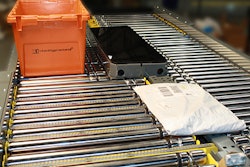March 17--BANGALORE/NEW DELHI -- E-commerce firms including Flipkart, Snapdeal, Myntra and Jabong are confronting resistance from all stakeholders of modern retail -- from consumer goods makers and distributors to offline retailers -- as they try and grab a larger share of the consumer's wallet by dangling attractive discounts.
Wholesalers and brick-and-mortar retailers, the worst hit by the boom in online shopping, are putting pressure on brands to help them compete more effectively with e-commerce websites.
While some electronic goods makers such as Lenovo Group Ltd and Toshiba Corp. warned last month that e-commerce sites weren't their authorized resellers, several apparel makers are in talks with online markets to get them to reduce discounts, ranging from 20 to 40 percent, said three executives working for online retailers.
"The problem is not nearly as big as it is with electronic retailers, but brands are talking to us about reducing the quantity of 'coupon' discounts," said Ganesh Subramanian, chief operating officer at Myntra, one of the top two online fashion retailers in India along with Jabong.
Coupon discounts refer to price-offs that all major online retailers and marketplaces offer customers if the purchase value of goods exceeds a certain amount (usually about Rs.1,500-2,000 across online retailers).
Although e-commerce accounts for less than 1 percent of the total retail market in India, it is by far the fastest growing retail channel. It is estimated to grow to as much as $22 billion (excluding travel) in five years from $3.1 billion currently, according to a report by CLSA.
Last week, India's largest online retailer Flipkart said it was on course to sell goods worth as much as $1 billion annually on its website in the year to 31 March, achieving its target a year in advance.
With a large supply chain and logistics network that does not require middlemen in most cases, online shopping sites have been enticing consumers with aggressive discounts, putting market share ahead of profitability.
Fashion brands have already noticed Indians adopting the practice of "showrooming" -- consumers browsing merchandise at a store and then purchasing the goods online because of attractive discounts, said Arun Sirdeshmukh, co-founder and chief executive officer (CEO) at online retailer Fashionara.
Some companies have been quick to respond.
"Offline retailers and brands are showing concern because their offline business is getting hit and to extent there is fear among brands that their image can get hurt if the prices are too low. When online was small, this whole thing wasn't a big issue. Now, because of the fast growth, it is," Sirdeshmukh said.
A senior executive at a large mobile phone retailer said brands are fast realizing that prices and demand may be dictated by the online channel -- if that isn't happening already.
"Over the past few months, footfalls at retail stores have been impacted. The slowdown isn't only to be blamed for this, but sales have evidently been shifting online, and this demand is hurting the larger ecosystem of offline retailers," the executive said on condition of anonymity.
Camera manufacturer Canon, for instance, has stopped selling its products on some websites. "We are not doing direct business with online sites where price disruptions are the core proposition," said Alok Bharadwaj, executive vice-president at Canon India Pvt. Ltd.
The company pulled out its products from a few shopping portals a few weeks ago. "We do have some partners who are adhering to our terms and requirements, and have been authorized to sell," he said.
Offline Backlash
The boom in e-commerce has particularly hurt small and regional offline retailers, some of which are lobbying with the government for a ban on foreign direct investment (FDI) in e-commerce firms. India doesn't allow FDI in online retail, but allows foreign funds in marketplaces.
Late last year, Hari Rastogi, who used to distribute Samsung and Dell products to bricks-and-mortar retailers in Karnataka, got over 4,000 small offline retailers selling books, electronics and apparel together, and formed an industry body called We Will Act to lobby against e-commerce firms.
Rastogi shut his business as retailers demanded lower prices and he is now volunteering with the Aam Aadmi Party partly because the party has publicly opposed FDI in retail.
"Margins have almost vanished and all offline retailers, especially the small, regional ones are feeling the pain. It's not possible for offline retailers to compete against the predatory pricing of online retailers and there are several firms, including mine, that have shut shop because of that," he said.
According to Rajan Malhotra, CEO at Future Group-owned electronics and gadgets retailer Ezone and group president, retail strategy at Future Group, e-commerce is bound to have an adverse impact on sales and footfalls at bricks-and-mortar stores. "It's a new industry and clearly flush with money. We are seeing multiple instances of predatory pricing. However, it is not sustainable in the long run," he said.
However, instead of feeling threatened, the company plans to step up its own online business. It will invest in ezoneonline.in even as it expands its existing network of 62 bricks-and-mortar stores. "The future consumer will shop online for lower-priced gadgets, so we cannot ignore the relevance of this platform," Malhotra said, adding that brands will ensure that e-tailers do not undercut prices.
Samsung Electronics Co. Ltd, which sells smartphones across retail channels, isn't fazed by the deep online discounts even though it operates its own online stores called Samsung Smart Phone Cafes. A Samsung India spokesperson said the firm keeps the overall interest of the end-users of its products and services in mind. "We respect the right of consumers to make informed choices," the person said.
For now, e-commerce sites continue to offer aggressive discounts; if anything, the discounts have increased slightly over the past six months as large sites have boosted their cash reserves, analysts said.
Flipkart, Snapdeal, Myntra and Jabong all received between $50 million and $360 million over the past year and with the entry of Amazon, the world's largest online retailer, which launched its India marketplace last June, competition has significantly intensified.
For this reason, online retailers are more reluctant than ever to cut discounts for the fear of losing customers to rivals. "You can't reduce discounts just like that. It's an intensely competitive market, so it's going to take time for discounts to come down," Myntra's Subramanian said.
Lessons from Overseas
India isn't the first country where offline and online retailers have clashed.
In the US, Amazon.com Inc. and eBay Inc. faced similar problems from the traditional supply chain when they were fast expanding in the 2000s and they continue to be criticized for steep discounting practices and, in some cases, sales of unauthorized and even fake products.
The steep discounts only widened the difference between online and offline prices, as until recently online retailers had been exempted from paying sales tax in the US.
German sporting goods maker Adidas AG said in June 2012 that it banned its dealers around the world from selling Adidas products on major e-commerce sites including eBay and Amazon.
Many fashion brands including Guess Inc. and Ralph Lauren also complained to Amazon over the past two years about steep discounting by third-party sellers, as the online retailer ramped up its marketplace business, which now generates over 40 percent of its volumes, according to a Reuters report on 23 October 2012.
However, these complaints haven't stopped Amazon from offering the lowest prices in most categories, said R.J. Hottovy, analyst at Morningstar Inc., a US-based research firm.
According to a study by Morningstar in which it checked prices of 400 products across 15 categories, including electronics, in the US, Amazon's prices were 8% lower than others, including bricks-and-mortar retailers, Hottovy, who tracks consumer goods, said over the phone from Chicago.
"Even if there were a nationwide sales tax, which we think is likely (at) some point in the future, (Amazon's) price leadership would still be 5 percent. Most brands are happy to have their products on Amazon because it has the kind of reach and supply chain that they can't match. Brands across many categories probably get lower margins selling online, but it's such a big channel that they can't afford to not have some kind of presence. Also, many first-time buyers buy through Amazon so it's a big risk to not sell there," he said.
Amazon also clashed with the world's largest supermarket chain Wal-Mart Stores Inc. in 2009 as both were pushing steep discounts on books, electronics and toys at a time when the US economy was still in the post-recession slump, according to a New York Times article dated 23 November 2009. The two companies later resolved the price dispute.
The resolution in India may not be quick for several reasons. For one, both e-commerce and modern retail are growing alongside. In the US, e-commerce took off when modern retail was already mature.
Too Big to Ignore
Besides, India follows the maximum retail price model, which makes it easier for consumers to see the extent of discount. In the US, prices are not regulated and the price of a product in different retail channels may vary hugely.
In fact, the mature US retail environment has created price warriors among bricks-and-mortar stores. Last but not the least, India's e-commerce companies, funded by private equity firms, are still in the investment phase.
"In such a scenario, these companies are not only cutting their own profit margins excessively, but even impacting those of offline retailers," said Katyayan Gupta, analyst at Forrester Research Inc.
Amazon's experience in the US indicates that while discounting by e-commerce firms in India may decrease in future, their prices will always be comparatively lower and bricks-and-mortar retailers will simply have to find ways to cope with it, experts said.
"I think it's a short-term issue because it's in the interest of both the brands and the online retailers that they work out a mutually beneficial solution," said Pinakiranjan Mishra, partner at audit and consulting firm EY. "Online is too big a medium for brands to ignore because it's clearly becoming increasingly popular with consumers, so brands can't afford to not sell there. And online retailers can't afford to discount too heavily because they need to make profits at some point. So they need to sit down and work out a deal."
Many clothing brands including Puma, Lee and others already work with online retailers to test demand in smaller cities and towns, and collaborate on discounting strategies, especially on leftover stock.
Rajiv Mehta, managing director of Puma South Asia, isn't complaining about the price-offs that e-commerce portals such as Jabong, Myntra, Flipkart and even pumashop.in offer.
"Although it does have an impact on offline sales (if online discounts are too steep), it's too small in proportion. As long as the products are moving, we are okay with the price points they go at," he said.
On the other hand, some offline retailers are responding to the threat from e-commerce firms by adopting an "omni-channel" approach: offering the same benefits, value and shopping experience across mediums.
At the Retail Leadership Summit in Mumbai in February, retailers such as Shoppers Stop, the MobileStore, Croma and Spencer's Retail were talking up their strategy of integrating their stores with their websites and trying to make e-commerce a crucial medium of sales.
"Over the next 12-15 months, every large player who wants to make an impact and make sure that their customer base doesn't get eroded will move (towards omni-channel)," Govind Shrikhande, managing director of Shoppers Stop Ltd, said at the summit in February.
Copyright 2014 - Mint, New Delhi















